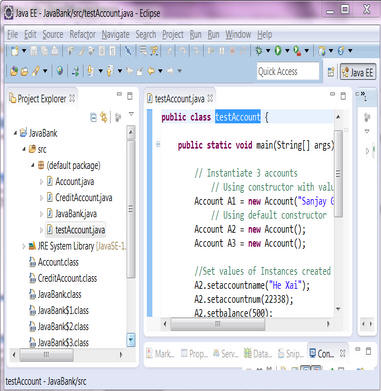

We can invoke it like this: (Arrays.toString(a)) Īs usual, we have to import before we can use it. One of them, toString, returns a string representation of an array. The Java library provides a utility class that provides methods for working with arrays. This type of array processing is often written using a for loop. So the body of the loop is only executed when i is 0, 1, 2, and 3.Įach time through the loop we use i as an index into the array, displaying the ith element.

When i is 4, the condition fails and the loop terminates. One of the most common ways to index an array is with a loop variable. You can use any expression as an index, as long as it has type int. When you create an array of ints, the elements are initialized to zero.įigure 8.1 shows a state diagram of the counts array so far. If you try to create an array with −4 elements, for example, you will get a NegativeArraySizeException.Īn array with zero elements is allowed, and there are special uses for such arrays that we’ll see later on. You can use any integer expression for the size of an array, as long as the value is nonnegative. Of course, you can also declare the variable and create the array in a single line of code: int counts = new int The second makes values refer to an array of double, where the number of elements in values depends on the value of size. The first assignment makes count refer to an array of four integers. To create the array itself, you have to use the new operator, which we first saw in Section 3.2: counts = new int To create an array, you have to declare a variable with an array type and then create the array itself.Īrray types look like other Java types, except they are followed by square brackets ( ).įor example, the following lines declare that counts is an “integer array” and values is a “double array”: int counts You can make an array of ints, doubles, or any other type, but all the values in an array must have the same type. 8.1 Creating arraysĪn array is a sequence of values the values in the array are called elements. This language feature will enable you to write programs that manipulate larger amounts of data.
#Greenfoot arrays how to
In this chapter, we’ll learn how to store multiple values of the same type using a single variable. Chapter 17.ppt: Discrete Event Simulations.Up to this point, the only variables we have used were for individual values such as numbers or strings.Chapter 16.ppt: Abstracting Simulations: Creating A Simulation Package.Chapter 15.ppt: Introducing UML and Continuous Simulations.A set of slides I used for exploring the Foxes and Rabbits Greenfoot scenario Ch14-Greenfoot-Foxes-and-Rabbits.ppt.Chapter 14.ppt: Introduction to Simulations with Greenfoot.Chapter 13.ppt: User Interface Structures.Chapter 12.ppt: Circular Linked Lists and Graphs.Chapter 10.ppt: Generalizing Lists and Trees.Chapter 9.ppt: Lists and Trees for Structuring Sounds.May also want WolfAttackMovie.avi or WolfAttackMovie.mov.Chapter 7.ppt: Structuring Images Using Linked Lists.Chapter 6.ppt: Structuring Music Using Linked Lists.Chapter 5.ppt: Arrays: A Static Data Structure for Sounds.Chapter 4.ppt: Objects as Agents: Manipulating Turtles.Chapter 3.ppt: Methods in Java: Manipulating Pictures.Chapter 1.ppt: Objects for Modeling a World.A complete set can be found here: CompleteSet-MediaCompDS-PPT.zip The older, beta version of the book slides are here:: Beta version of book slides.zip. Media Computation Data Structures Book Slides Media Computation Data Structures Book SlidesĪll book slides for the data structures book are here.


 0 kommentar(er)
0 kommentar(er)
